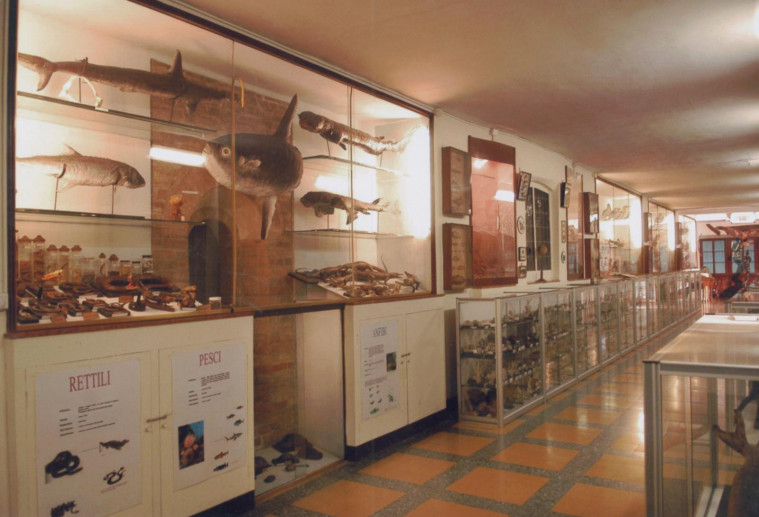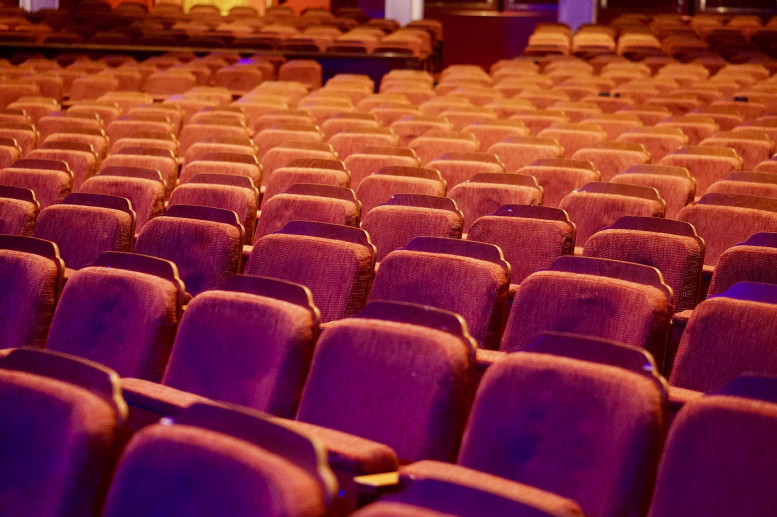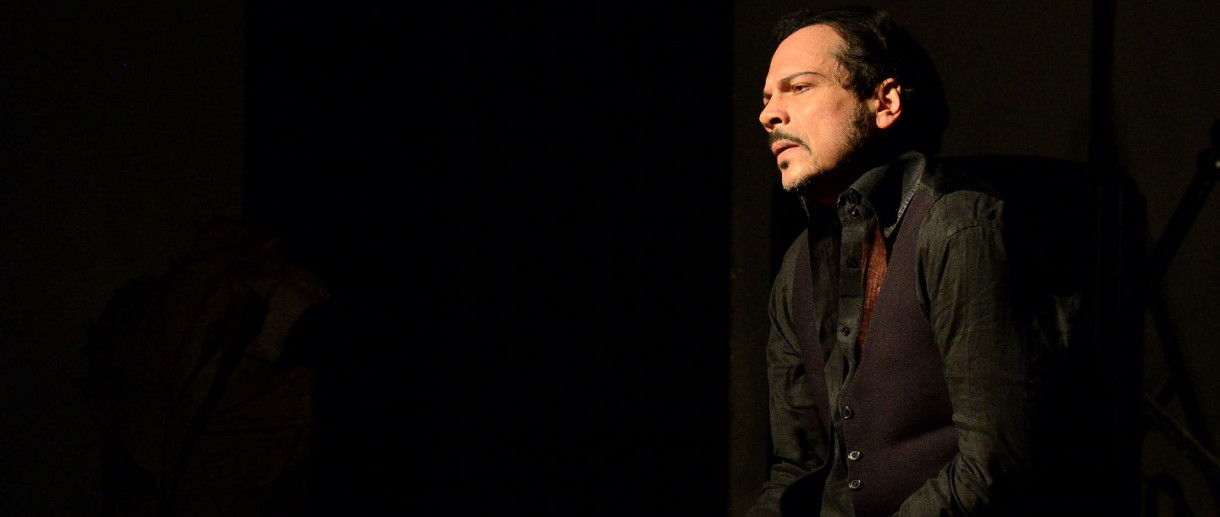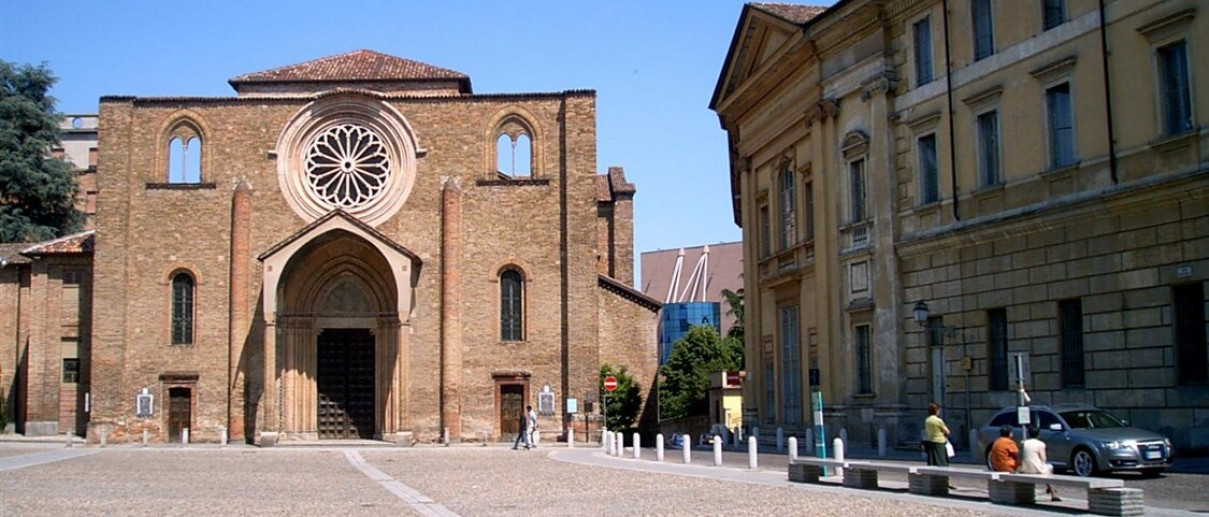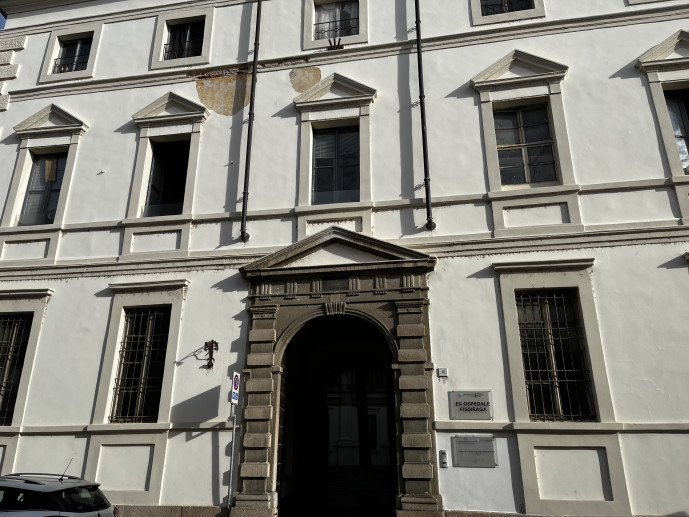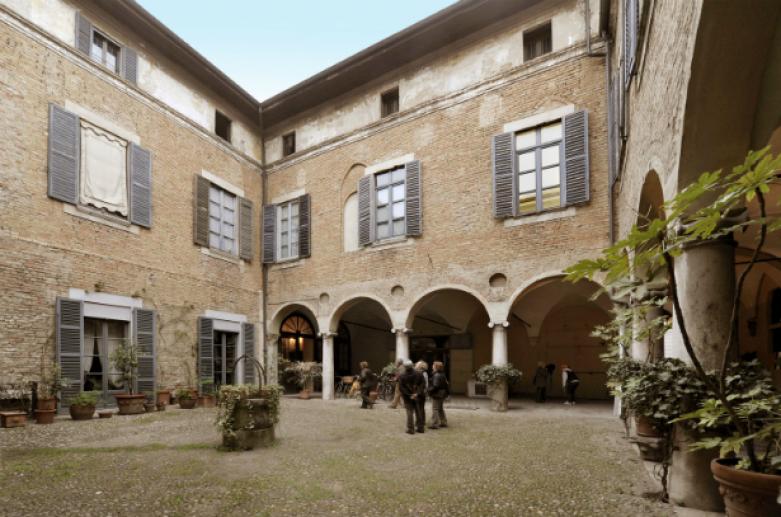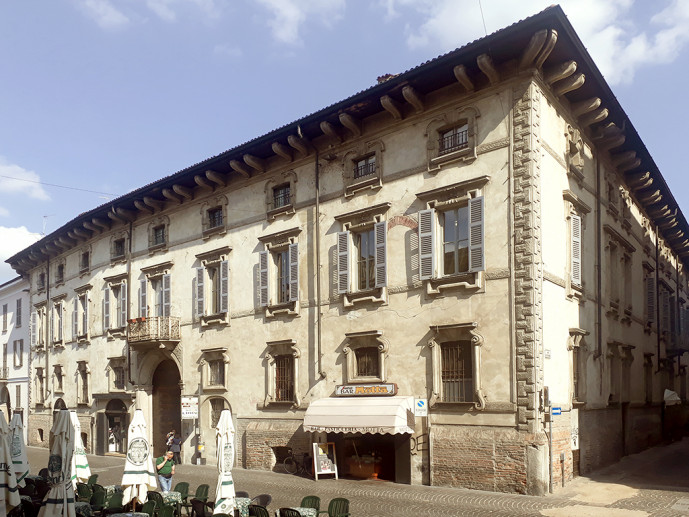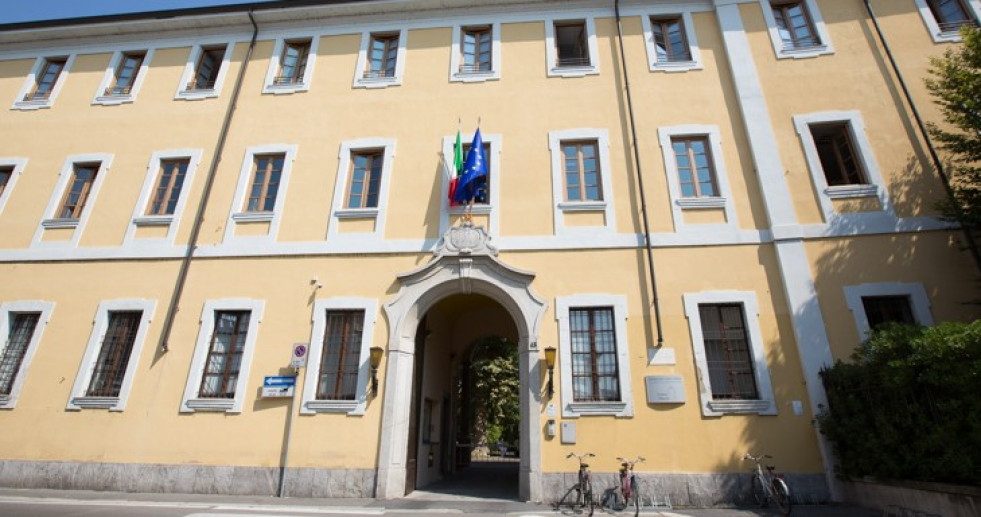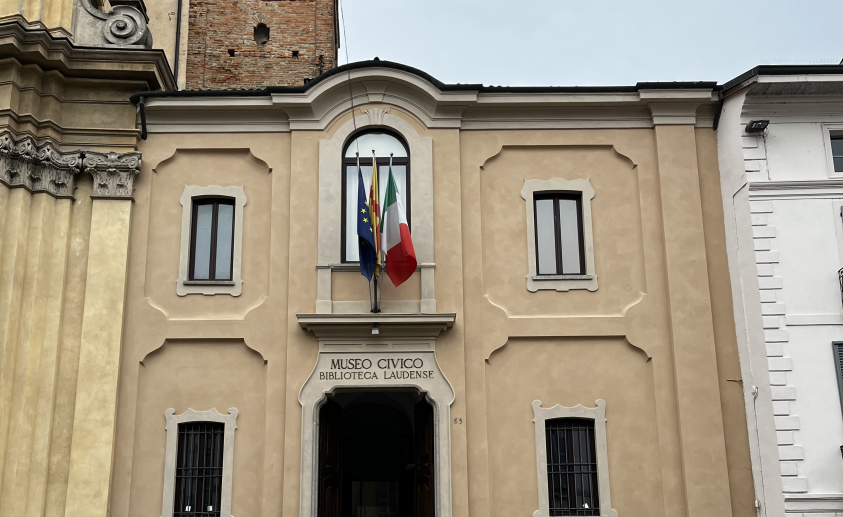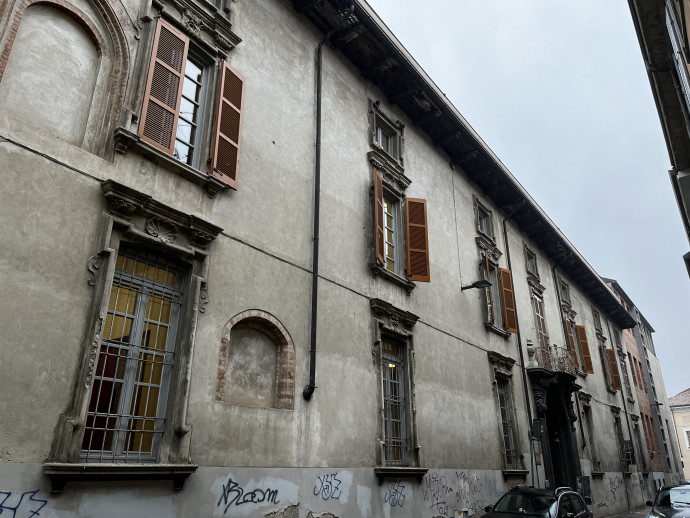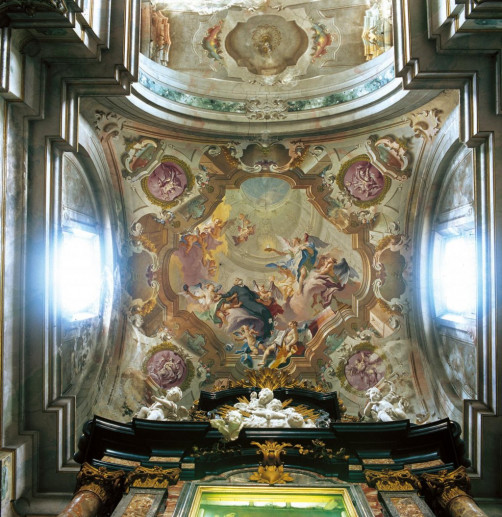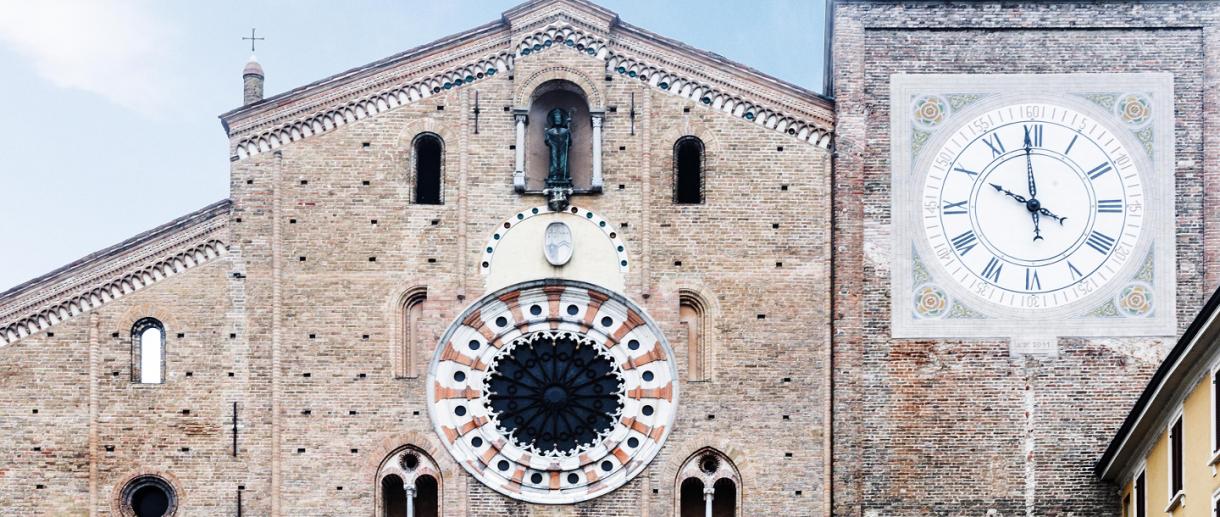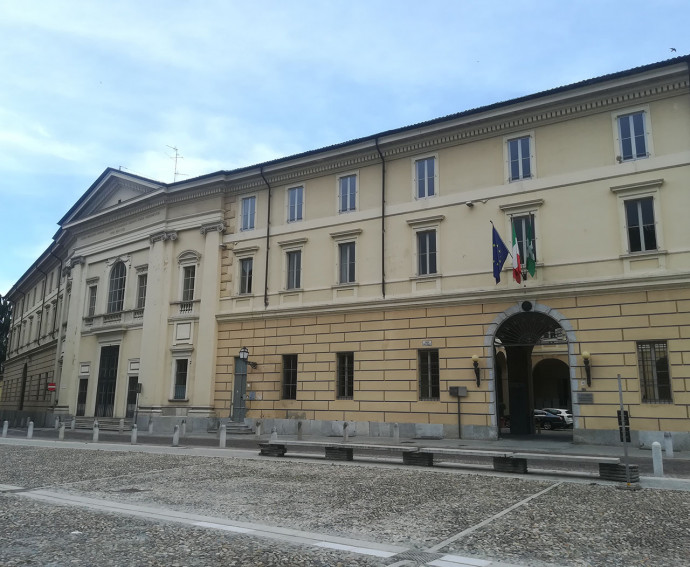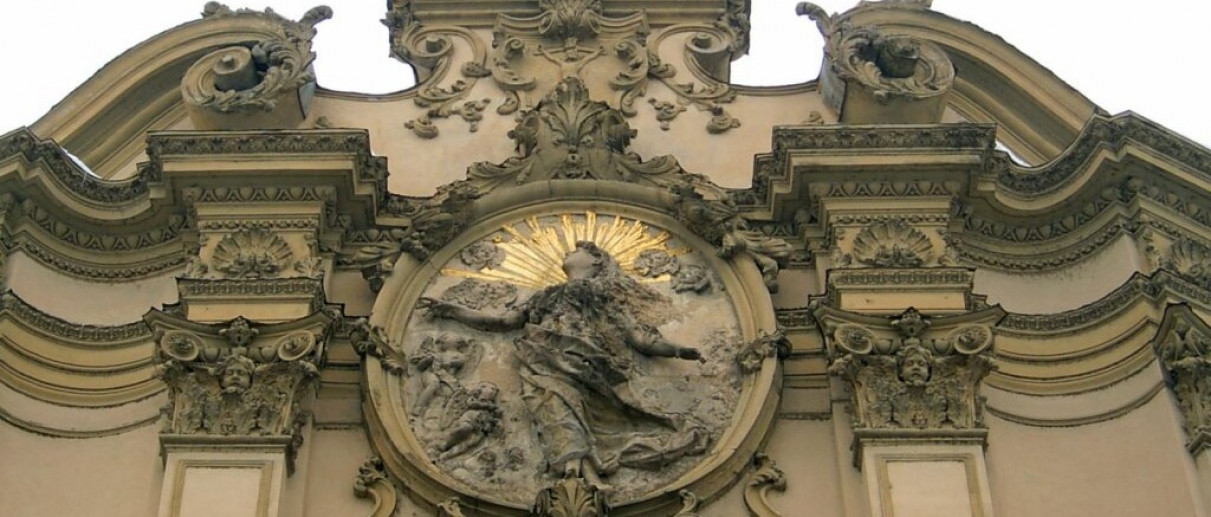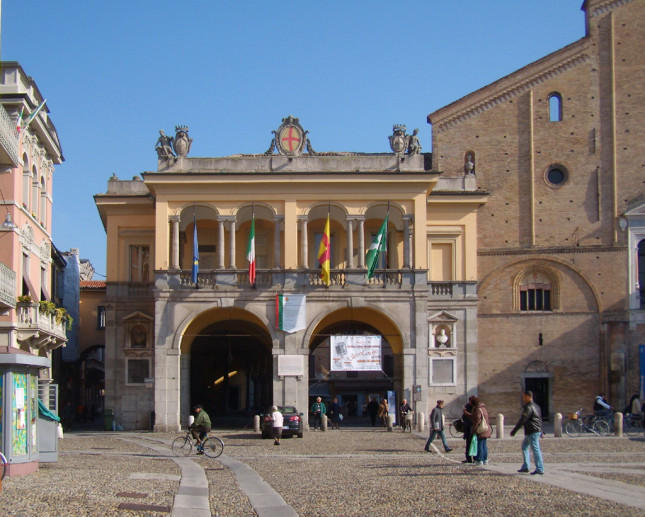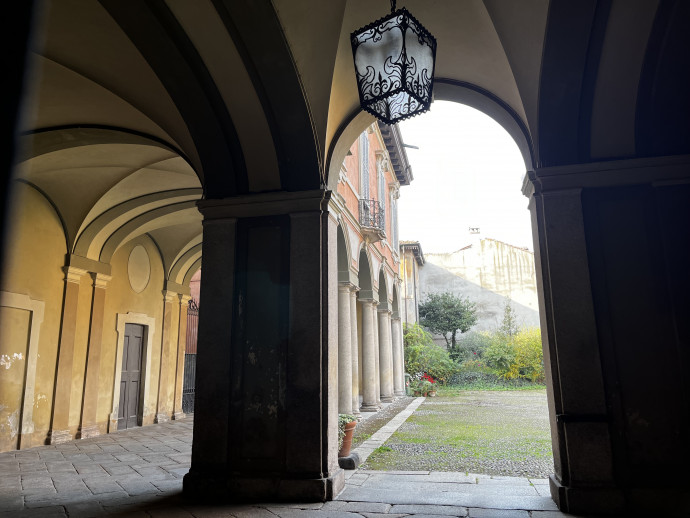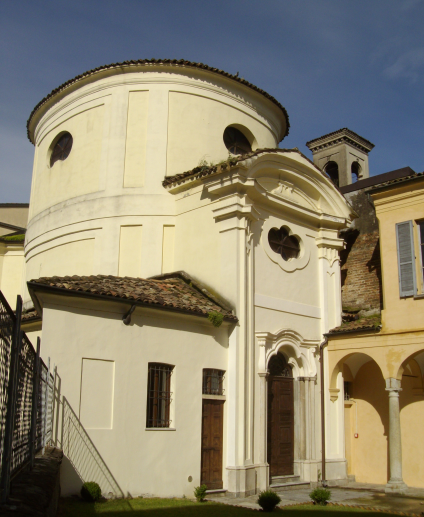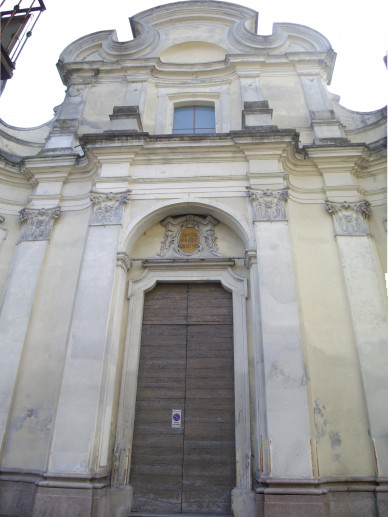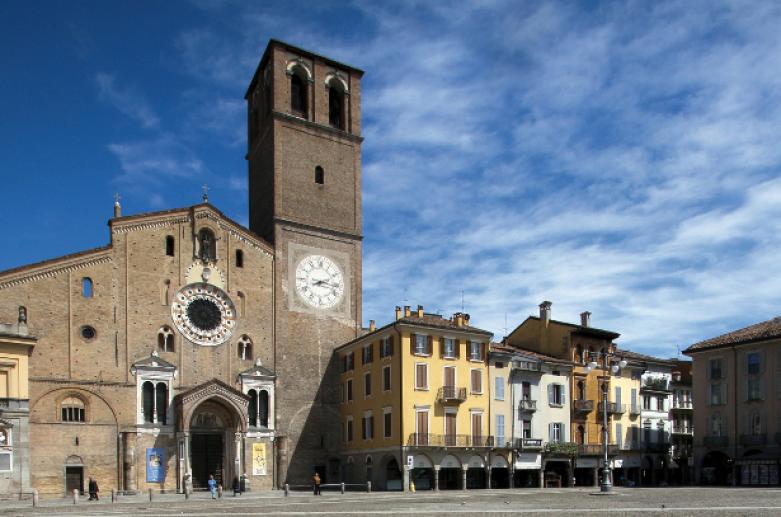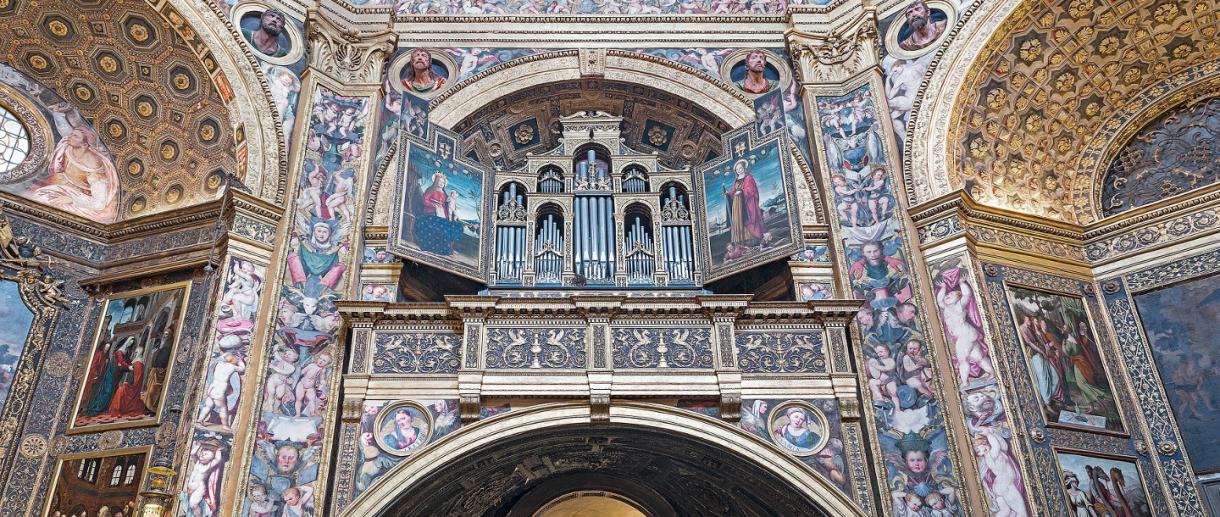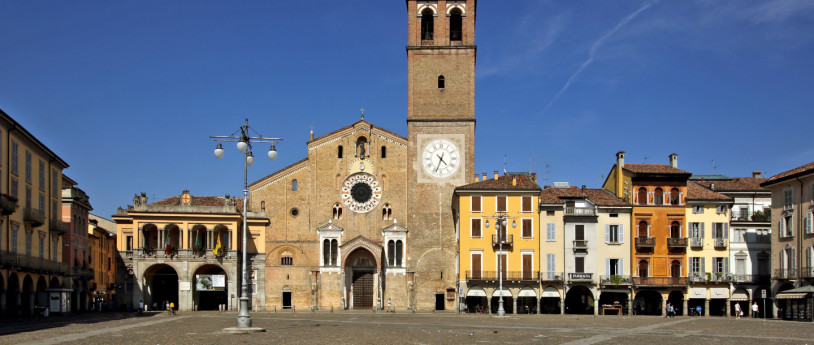- Art & Culture
Liceo P. Verri - Aula Magna
Founded as a convent it was handed over to the Benedictine nuns who built the church in 1588 (today's Aula Magna).
The building dates to the early 14th century. Bishop Egidio dell'Acqua granted the building to the Humble Nuns in 1312, who occupied the monastery until the end of the 16th century.
Following the suppression of the order (1570) and the assumption of the rule of St Benedict, the monastery passed to the Benedictine nuns in 1579. The number of nuns grew quickly, and it was decided to build a church attached to the monastery; thus, the monastery church was erected in 1588, and later used as the Aula Magna.
The monastery was renovated in 1615 to the design of architect Pellegrino Tibaldi, to whom we owe the design of the cloister. The church underwent some interventions during the 18th century, to which period the stucco work and frescoes in the Aula Magna date back.
The monastery and church were suppressed on 22 April 1785, and the building became a shelter for beggars.
The building was renovated again in 1794 when architect Giuseppe Piermarini gave the cloister and inner courtyard their final design; the former monastery took on its distinctive neoclassical appearance. With the establishment of the Lombardy-Veneto Kingdom, the former monastery became the seat of the Imperial Royal Provincial Delegation from 1816 until the handover of Lombardy to the Kingdom of Sardinia. In 1859, with the Rattazzi Decree, it became the seat of the sub-prefecture of the Lodi district, until the institution was suppressed in 1926.
During the 1930s, the building was chosen as the new headquarters for the Lodi Classical High School. Architect Giovanni Muzio, a leading exponent of the 'Novecento' art movement, received the order to restore the former convent and turn it into a lyceum in 1932. The missing part of the second order towards the church was completed in the cloister, the church was adapted as a lecture hall for the lyceum, and the building was provided with classrooms and laboratories. The lyceum moved to the new premises in 1935, which had remained the same as redesigned by Giovanni Muzio until the year 2000. The building was completely renovated and restored between 2000 and 2002, recovering the eighteenth-century frescoes and stuccoes that had survived the renovation of the 1930s, in the main hall and the teacher's lounge; a new library was also built in the attic. Following renovation, the building returned to the Liceo Verri in 2003.
